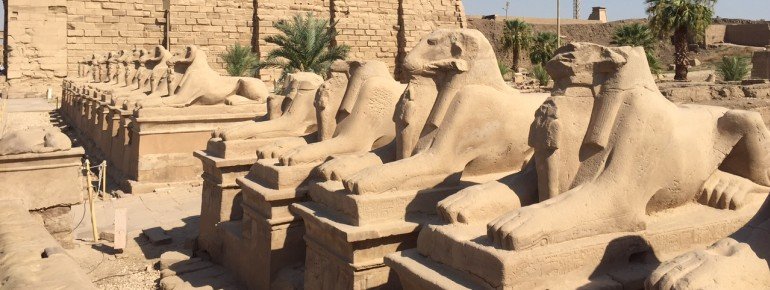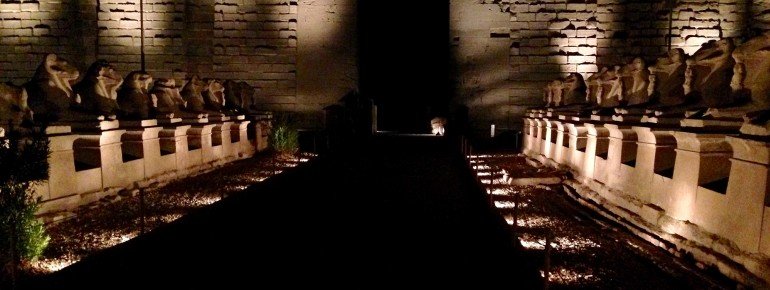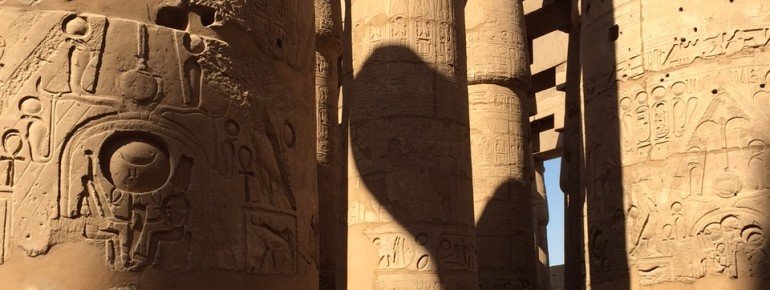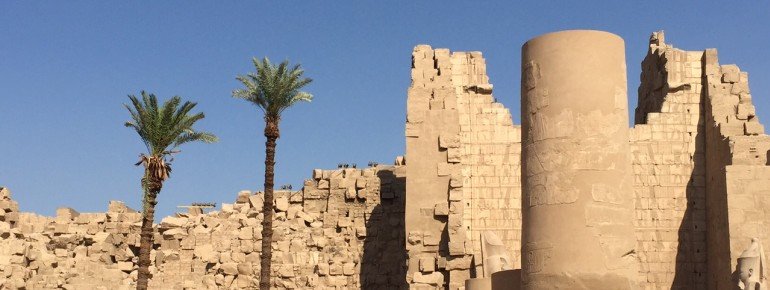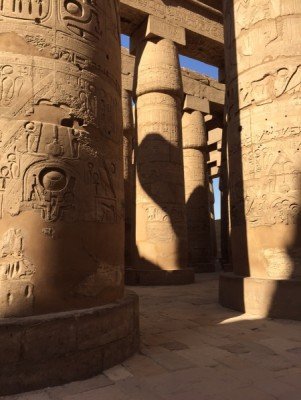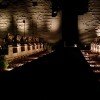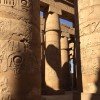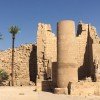Contents
Description
The temple complex of Karnak is located around two and a half kilometers north of the Nile city of Luxor and is the largest of its kind in all of Egypt. The complex consists of several districts: the district of Amun-Re, that of the Month and that of Mut - they were dedicated to gods of ancient Egyptian mythology. There is also the Temple of Aton and the Gem-pa-Aton. These two areas were built during the reign of Akhenaten, who wanted to turn ancient Egyptian mythology into a monotheistic religion with faith in the sun god Aton.
Temple and district of Amun
The ruins of the temple of Amun, the most important god of the ancient Egyptians, are particularly outstanding. There are a total of ten pylons with a maximum width of 113 meters, a thickness of around 15 meters and a (planned) height of around 45 meters. The temple has a total area of around 30 hectares and, in addition to the pylons, includes an impressive portico. In ancient times, the temple was connected to the Luxor Temple about two and a half kilometers away by an avenue with 365 sphinxes. You can still see the remains of this avenue today. The district of Amun also includes the White Chapel, the Red Chapel, the Alabaster Chapel and the Sacred Lake. The Temple of Ramses III and the two temples dedicated to the gods Opet and Chons also fall within this area.
District of the Month
The 151 x 155 meter area of the Month is located to the north of the Amun Re district. An avenue of 30 human-headed sphinxes leads from the entrance to the Month temple to a quay. The temples of Maat and Harpare are also located here.
District of Mut
The area for the goddess Mut is located around 350 meters south of that of Amun-Re and covers an area of 250x350 meters. The temples of Amun-Re and his wife Mut were connected by an avenue with 66 sphinxes. In addition to a sacred lake, there are also remains of a birthplace built by Ramses II, a temple of Ramses III and the temple of Kamutef.
Light and sound show through the Karnak temples
The site is particularly worth seeing during the famous light and sound show, which takes place daily after sunset. The significance of the Karnak temples for the ancient Egyptians and their world of faith is presented with the help of spectacular light effects. Walking through the Temple of Amun at night creates a truly unique atmosphere and allows you to better understand the significance and monumentality of this place. You will be guided through four stages from the entrance area to the sacred lake. The show is set to music from Verdi's opera Aida. The show alternates between German, English, French and other languages.
Historical Information

The oldest parts of the Karnak temples still preserved today date back to the 12th dynasty of the Middle Kingdom and were built under King Sesostris I. In the course of history, the complex was repeatedly rebuilt and extended until the time of the Roman emperors. Since 1979, the Karnak Temples, together with the neighboring Luxor Temple and the necropolis of Thebes (Valley of the Kings), have been a UNESCO World Heritage Site.
Amun-Re was the local god of the city of Thebes (now Luxor) during the early Middle Kingdom, which is why a temple was dedicated to him. A temple for Amun's wife Mut and one for her son Chons were also built in the Karnak complex. Together they form the so-called Triad of Thebes. A temple for the god Month, who was the main god of Thebes in the 11th dynasty, followed later.
How to get there
Tourists usually visit the Karnak temples accompanied by experienced tour guides. You will then be taken comfortably by coach from the Nile boats or the tourist resorts on the Red Sea to the temple complex. Only true connoisseurs of Egypt should visit the temples on their own. On the one hand, the tour guide can give you important historical background information on the complexes, and on the other hand, this also ensures that you arrive safely at the temple. Egyptian cities, including Luxor, usually have rather chaotic traffic. However, if you don't want to travel with a tour group, it's best to take a cab.

